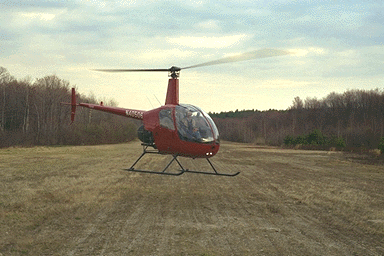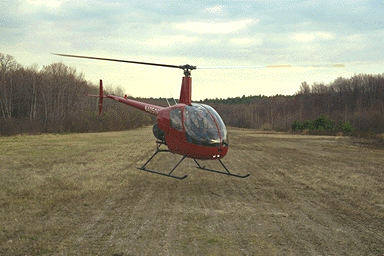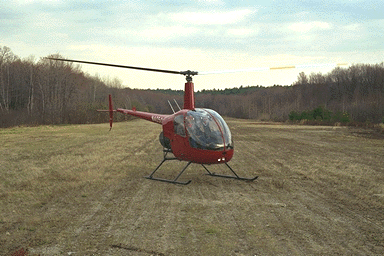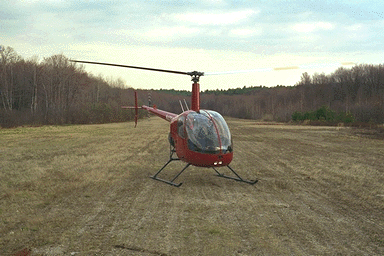Hovering Autorotation Sequence
This first photo shows the Robinson R22 in a normal hover just after the
throttle has been closed, removing all power from the rotor system.

This photo shows the helicopter has descended most of the way to the ground,
using the energy stored in the spinning rotor system to provide thrust. About
this height is where the pilot will raise his collective pitch control all
the way up in order to get every bit of available thrust to cushion the landing
as much as possible.

This photo shows the helicopter on the ground just after touchdown:

This photo shows the helicopter firmly on the ground, with all the weight
off of the rotor system, and transferred to the landing gear. Note that
during the time between the previous picture and this picture, the helicopter
has yawed significantly to the right. In the Robinson this is characteristic
of a pilot who has not rolled the throttle into the override. As the final
amount of collective pitch is raised, the Robinson correllator rolls on some
throttle and the torque yaws the aircraft while on the ground. This would
not normally be considered good technique...

Notice the coning of the rotor blades in this final picture. They make a
distinct "V" shape because there is no longer sufficient RPM to hold them
down straight.
Return to Hovering Autorotation description




